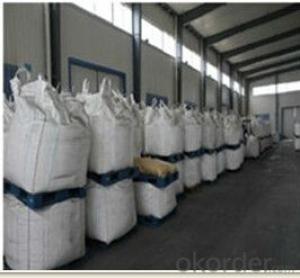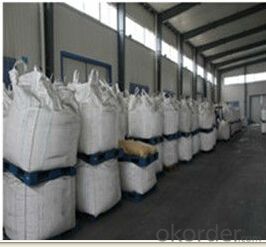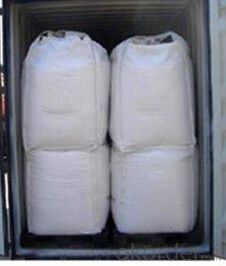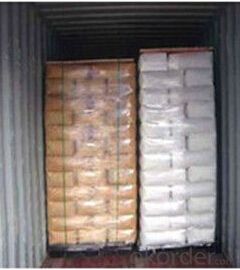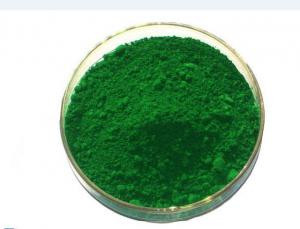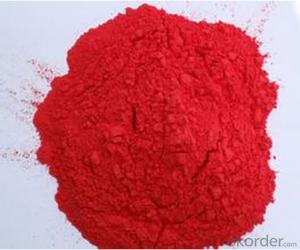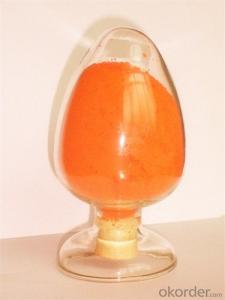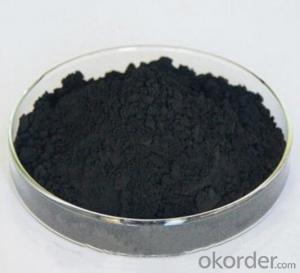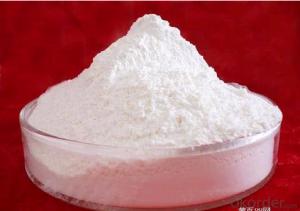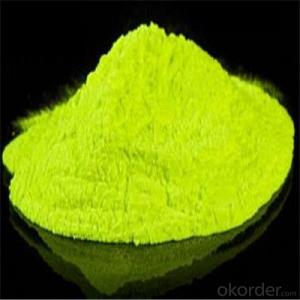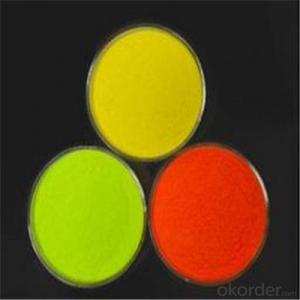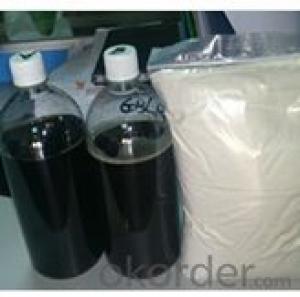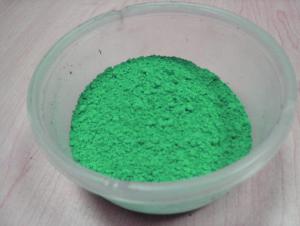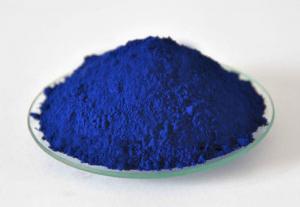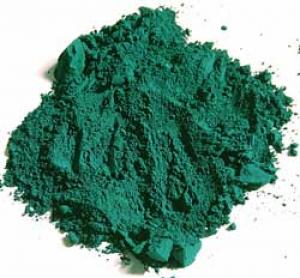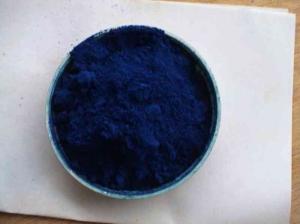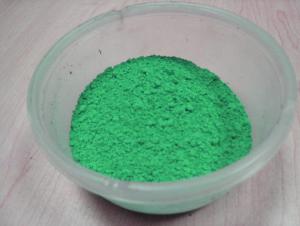Textile chemicals sodium alginate Chemical Auxiliary Agent
- Loading Port:
- Shanghai
- Payment Terms:
- TT OR LC
- Min Order Qty:
- 1 bottle
- Supply Capability:
- 10000 bottle/month
OKorder Service Pledge
OKorder Financial Service
You Might Also Like
Quick Details
| Classification: | Chemical Auxiliary Agent | CAS No.: | 9005-38-3 | Other Names: | Alginic Acid Sodium Salt |
| MF: | C5H7O4COONa | Purity: | 89% | Place of Origin: | Shandong China (Mainland) |
| Type: | Activated Carbon | Usage: | Textile Auxiliary Agents | Brand Name: | xinruitai |
| Model Number: | cp001 | Color: | brown or Yellowish | Application: | Textile Auxiliary Agent |
| Grade Specification: | Printing Paste | Dye: | Activated Dyes | PH Value: | 6.5-7.5 |
| Ca Content %: | 3% max |
Packaging & Delivery
| Packaging Detail: | 25kgs per bag |
| Delivery Detail: | 2 weeks |
Specifications
have stock
seaweed smell
different viscosity
different mesh
Textile chemicals sodium alginate
Printing paste: Sodium Alginate is an ideal printing paste. It is yellowish powder. It contains positive charge,
which has mutual repulsion with electro positivity contained in reactive dyestuffs, yet it won't be covalent
bonding with reactive dyestuff, and that makes dyestuffs stick to paste.
*Sodium Alginate is widely applied to different kinds of textile printing, such as cotton, linen, silk and synthetic
fibre.It makes printing textile to attain bright colors, sharp definition and good color yield, high color fixing and
soft hand feeling.Liquid mixture with Sodium Alginate has good plasticity and flexibility. Owing to its perfect
effect on textile printing and low cost, Sodium Alginate is popular in application.
- Q: (Explain what happens when a pigment molecule is struck by electromagnetic radiation in the visible light spectrum.)
- pigments are molecules that absorb electromagnetic radiation. For example, the chlorophyll pigment in plants absorbs blue and red light, which is why they reflect green light (since green is the color not absorbed). Another example is melanin, which is the pigment that darkens the skin of people. Melanin absorbs UV to protect the skin. A pigment molecule struck by EM radiation in the visible region may absorb some of the light depending on what pigment it is.
- Q: Is gel food coloring a pigment or a dye?
- Dyes contain pigments, my friend. What is a pigment? They are like little beads. Very very tiny beads of the same color. Then if you spread these out, they give the thing a color. For example, the little green beads in leaves give it a green color. Pigment in our hair gives it a blonde/auburn/brown/black color. What is a dye? A dye is a liquid made up of water and pigments. The pigments are dissolved in water (well not really dissolve just that you cant see the beads) so that it's easier for us to use it. Everything that has a color is made up of pigments. So, gel food coloring is a thicker version of a dye that contains pigments.
- Q: What is better, Mac eye pigments or the regular eyeshadow? Also, has anyone tried the mixing medium solution?
- The pigments are purer colors that are MUCH more intense and longer lasting. I've got it in two colors. It's great.
- Q: i would like to now so i could put it in a marker thanks..
- Isn't all ink pigmented? A quick search for make your own ink turned up many recipes. Here is one: Basic Permanent Black Ink: 1 egg yolk 1 tsp gum arabic 1/2 cup honey 1/2 tsp lamp black (buy in a tube or make by holding a plate over a lit candle) Mix egg yolk, gum arabic and honey in a small bowl.
- Q: I have bought 2 Mac Pigment to use as eyeshadow,I thought it was supposed to be easy to use,turned out it wasn't.My eye looked like I got hit, so messy and the pigment was all over the place. I wonder if i should wet my brush or do u have some kind of tricks before applying it.Any advice would be appreciated.Thanks for helping.
- With the pigment you have many options to apply them. In my experience I have learned three primary ways that work well. 1) If you are looking to use as a shadow apply a base such as a lid primer or a paint, then apply the pigment using little pigment, it is always easier to build up the color than it is to take away. 2) If you want the color to be darker and have more dramatic impact use the pigment with mixing medium or water and apply carefully with a brush using little amounts. 3) I like to use the pigments as eyeliner, to do that I either apply just using a brush, using mixed with water/medium or on top of black eyeliner. By using a base your color lasts longer and it gives you a smoother application. Also to deal with the stuff that drops on your cheeks my hints are either do your eyes first and use a makeup remover wipe to take it away or use your powder apply it using a brush heavily up under your eyes and then when done with eye makeup dust the powder and pigments away. I know the second option looks weird but it does work. Also if you ever do apply pigments and they start to go to dark or look a bit patchy try applying a eyeshadow over them not only to change the color but also to change the look of the eyeshadow texture. Hope this helps.
- Q: How are plant pigments like teammates on a sports team? And What is the goal of their teamwork??
- Pigments in the reaction center work together to organize themselves in place, to protect the plant from injury from incidental light, and to absorb photons from the spectrum with each pigment catching its own portion of the incoming wavelengths. The accessory pigments catch and pass energy to chlorophyll a. Chlorophyll a is the specialist that plays the photon's electromagnetic energy into chemical. It splits water to release its electrons and hydrogen ions for use in the calvin cycle where glucose is manufactured. The goal is to fix energy into a usable organic form for the plant to live on.
- Q: Can somebody answer this in AP BIO language please
- A pigment molecule absorbs at specific wavelength(s), meaning that when light of a specific wavelength is incident to the molecule only certain wavelengths are absorbed while others are transmitted. The spectrophotometer emits monochromatic light (light of only one wavelength) which passes through the pigment molecule and a detector determines the amount of light that is either absorbed or transmitted by the sample. This is done at wavelengths from the UV (180-330 nm) to the visible (330-700 nm) and the light that is either transmitted or absorbed is detected by the spectrophotometer and is able to be graphed with absorbance representing the y-axis and wavelength representing the x-axis. The resultant graph will depict the absorption spectrum of that particular pigment molecule. Hope that helps.
- Q: What pigments take part in photosynthesis?
- There are three basic classes of pigments. Chlorophylls are greenish pigments which contain a porphyrin ring. This is a stable ring-shaped molecule around which electrons are free to migrate. Because the electrons move freely, the ring has the potential to gain or lose electrons easily, and thus the potential to provide energized electrons to other molecules. This is the fundamental process by which chlorophyll captures the energy of sunlight. There are several kinds of chlorophyll, the most important being chlorophyll a. This is the molecule which makes photosynthesis possible, by passing its energized electrons on to molecules which will manufacture sugars. All plants, algae, and cyanobacteria which photosynthesize contain chlorophyll a. A second kind of chlorophyll is chlorophyll b, which occurs only in green algae and in the plants. A third form of chlorophyll which is common is (not surprisingly) called chlorophyll c, and is found only in the photosynthetic members of the Chromista as well as the dinoflagellates. The differences between the chlorophylls of these major groups was one of the first clues that they were not as closely related as previously thought.....
- Q: (After the fifteenth century)
- Pigment is color in powder form. An example is lamp black; it was first made from the soot of kerosene lamps ground fine. Binder is a substance used to hold pigment together and make it adhere; in the previous example, linseed oil would be the binder for the lamp black pigment. Vehicle is a medium acting as a solvent, carrier, or binder for paint; turpentine or mineral spirits would be a vehicle but so would linseed oil as well to help dilute the paint and help it cover a large area. Hope that helps and thanx.
- Q: So i'm writing up a lab report and i'm just a little confused on why scarlet, rosy, cinnabar and vermillion mutants contain the same kinds and amounts of pigments found in wild-type according to paper chromatography. Since they're mutants shouldn't it be different? I don't understand how i'm going to explain that they are mutants when it appears that they have the same phenotype as wild-type. Thank you so much for your help!
- Man pigments determine the colour of the eye. If the composition of pigments is same in all the flies,how can the colour in which their eyes look differ?isn't this a contradiction?i suspect the accuracy of The chromatography test because even a very very slight change in the amount of pigment can significantly change the colour. The phenotype is always different in mutants due to different genotype. in genotype is taken for granted if a change in phenotype is present. Wait just got over into a nice point. Sometimes even if the pigment composition being same different colours m8 be produced due to different allotropes or iro of the same pigment might have different colours!though allotropes(not isomers) have same composition but differ in,their post translational changes r different.since post translational changes r indirectly influenced by genes.this completely explains this case.
Send your message to us
Textile chemicals sodium alginate Chemical Auxiliary Agent
- Loading Port:
- Shanghai
- Payment Terms:
- TT OR LC
- Min Order Qty:
- 1 bottle
- Supply Capability:
- 10000 bottle/month
OKorder Service Pledge
OKorder Financial Service
Similar products
Hot products
Hot Searches
Related keywords
